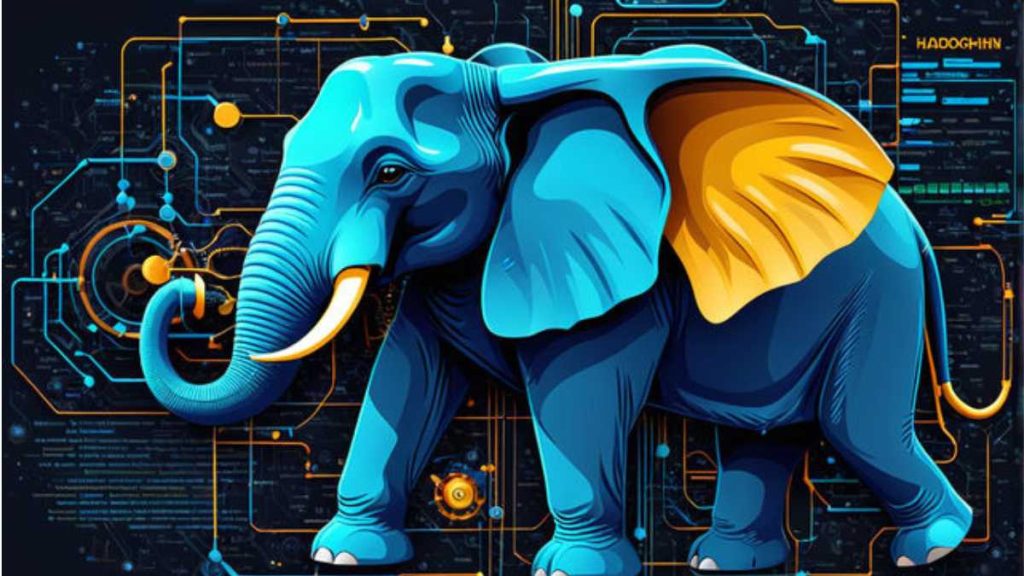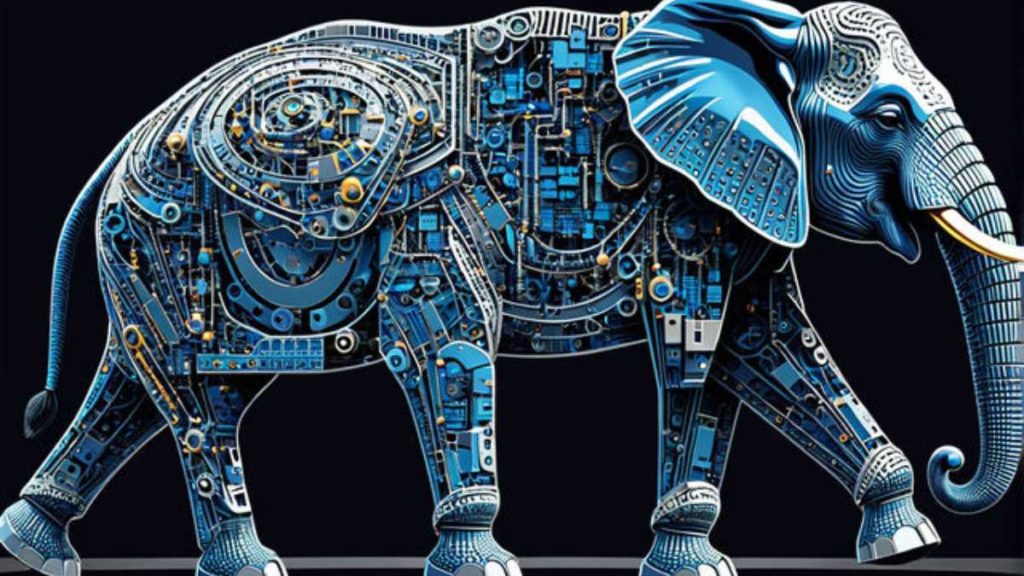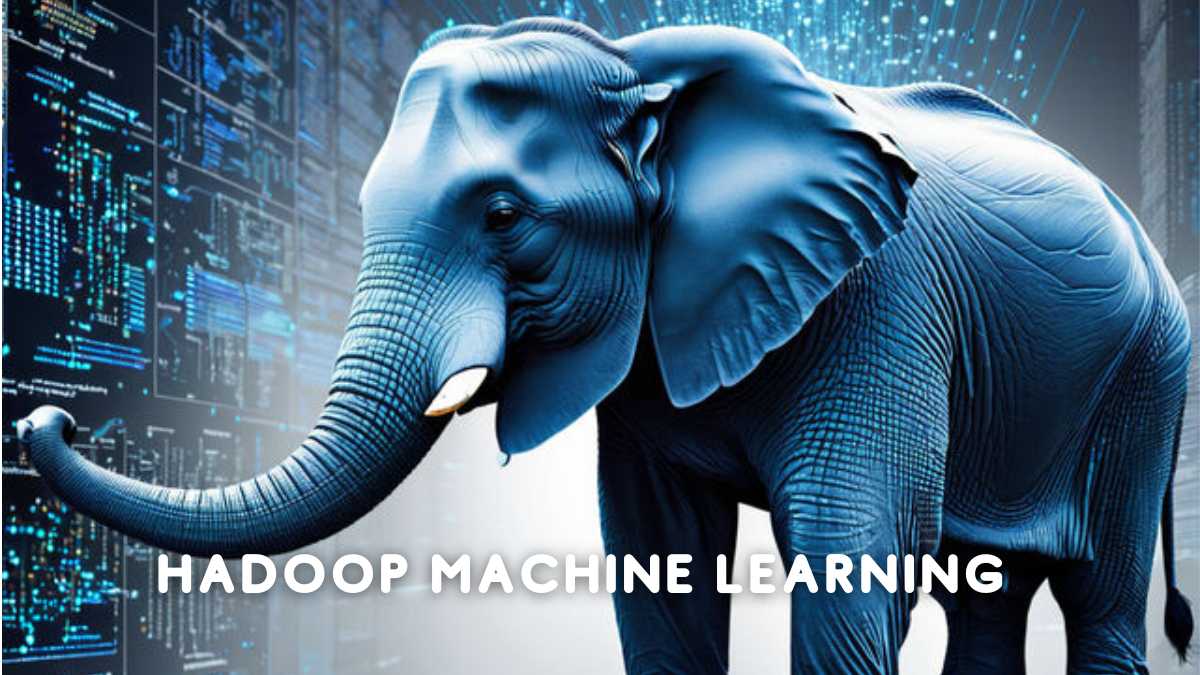Learn how to leverage Hadoop for scalable machine learning. Build models, analyze massive datasets, and unlock the power of your data.
You’ve got more data than you know what to do with. Terabytes of the stuff, just sitting there, waiting to be analyzed. But your traditional analytics tools can’t handle datasets that massive. What you need is a scalable platform built for big data—something like Hadoop.
With the power of distributed computing behind it, Hadoop allows you to leverage machine learning at a scale previously unimaginable. In this guide, you’ll learn how to build machine learning models on Hadoop, taking your data analysis to the next level. We’ll cover the leading tools and techniques for everything from classification and clustering to deep learning.
You’ll walk away ready to uncover game-changing insights buried in your mountain of data. So buckle up, because we’re about to unlock the true potential of your big data through scalable machine learning on Hadoop.
An Introduction to Hadoop for Machine Learning

Hadoop is an open-source framework that allows for the distributed processing of large data sets across clusters of computers. It’s a powerhouse for machine learning because it can handle the massive datasets required to train sophisticated models.
| Concept | Explanation | Importance for Machine Learning |
|---|---|---|
| What is Hadoop? | A distributed computing framework designed to store and process massive amounts of data (“Big Data”) across clusters of computers. | Machine learning often involves datasets too large for traditional storage and processing. Hadoop offers scalability. |
| HDFS (Hadoop Distributed File System) | The primary storage system in Hadoop. It divides files into blocks and distributes them across the cluster. | HDFS provides fault tolerance and high availability for machine learning training data, making it resilient to failures. |
| MapReduce | The programming model used in Hadoop. It involves two phases: Map (processes data in parallel) and Reduce (aggregates results). | Many machine learning algorithms can be expressed in MapReduce terms, allowing for parallel execution across large datasets. |
| Hadoop Ecosystem | Hadoop includes tools beyond HDFS and MapReduce: Yarn (resource management), Hive (SQL-like interface), Mahout (machine learning library), and more. | These tools streamline data preparation, model building, and deployment of machine learning solutions at scale. |
Data Storage
Hadoop’s HDFS (Hadoop Distributed File System) allows you to store huge amounts of data (we’re talking petabytes!) across a cluster of commodity servers. This means you have scalable storage for even the largest datasets needed for machine learning.
Data Processing
Hadoop also gives you tools to process all that data. Using MapReduce, you can distribute data processing tasks across nodes in your cluster. This allows you to run complex algorithms on huge datasets in a reasonable amount of time.
Machine Learning Libraries
There are libraries built on top of Hadoop tailored for machine learning, like Mahout. These libraries contain scalable implementations of algorithms like clustering, classification, and recommendation engines. They allow you to build machine learning models on massive datasets without having to code the distributed computing parts yourself.
With Hadoop’s scalable storage, distributed computing capabilities, and machine learning libraries, you have everything you need to build robust models on huge datasets. Hadoop brings big data and machine learning together, so you can gain valuable insights from all your data.
How to Build Scalable Models With Hadoop Machine Learning

To build machine learning models at scale, you’ll want to leverage the power of Hadoop. Gather Massive Datasets
Hadoop’s distributed file system (HDFS) allows you to store huge amounts of data across clusters of commodity hardware. You can gather datasets of virtually any size to train your models.
| Step | Considerations | Tools/Techniques |
|---|---|---|
| Data Collection & Storage | * Volume: * Can your existing system handle the data size? * Variety:* Structured, semi-structured, unstructured data? * Velocity:* Batch or streaming data? | * HDFS (for reliable storage of large, diverse datasets) * Flume, Sqoop (for data ingestion) |
| Data Preprocessing | * Data Cleaning:* Outlier detection, missing value handling. * Feature Engineering:* Transformation, selection, dimensionality reduction. | * Spark MLlib (preprocessing algorithms) * Hive, Pig (data manipulation and ETL) |
| Model Selection | * Algorithm choice:* Classification, regression, clustering, etc, based on your problem. * Complexity:* Model complexity vs. computational cost tradeoffs. | * Mahout (library of machine learning algorithms) * Spark MLlib |
| Distributed Training | * Parallelization:* Can your algorithm be split across nodes? * Framework:* Spark MLlib often preferred for iterative algorithms. | * Spark MLlib (distributed versions of common ML algorithms) * Mahout (some algorithms have MapReduce implementations) |
| Model Evaluation | * Cross-validation on a large dataset* * Performance metrics beyond accuracy (e.g., precision, recall for class imbalance) | * Spark MLlib (Evaluation tools) |
| Deployment | * Model serving:* Real-time or batch predictions? * Integration:* How will models interact with existing systems? | * PMML (model export format) * REST APIs, web services. |
Choose an ML Library
There are open source libraries built for Hadoop like Mahout, Spark MLlib, and H2O. These provide scalable implementations of algorithms like logistic regression, naive Bayes, clustering, and more. Pick a library that suits your needs.
Prepare Your Data
Use tools like Flume, Sqoop, and Kafka to import data into HDFS. Then use processing engines like Spark and MapReduce to clean, transform, and preprocess your data. Standardize features, handle missing values, discretize, and scale your data.
Build and Train Models
Now you can build models with your chosen ML library. Split your data into training, validation, and test sets. Train multiple models with different hyperparameters, and evaluate them using cross-validation to pick the best one.
Evaluate and Tune
See how your models perform on new data using the test set. Calculate metrics like accuracy, precision, recall, and F1-score. Tune hyperparameters using grid search to optimize your models.
Make Predictions
Once you have a well-performing model, you can make predictions on new data at scale. Hadoop’s distributed computing capabilities allow your model to score huge amounts of data efficiently.
With the power of Hadoop, you have everything you need to build machine-learning models on big data. Gather massive datasets, choose a scalable ML library, prepare your data at scale, build and evaluate models, and make predictions on huge amounts of data. Now you can unlock the value in your data through machine learning!
Real-World Examples of Hadoop Machine Learning
Hadoop machine learning powers many technologies we use every day. Here are a few real-world examples:
Product Recommendations
Have you ever wondered how companies like Amazon and Netflix recommend products or movies you might like? They use machine learning models built on Hadoop to analyze your past purchases, ratings, and browsing behavior to find patterns. These patterns are then used to suggest new items you’ll probably be interested in.
Fraud Detection
Before too much damage is done, banks and credit card issuers must promptly identify fraudulent transactions. With Hadoop, they can examine massive amounts of transaction history data and find trends that point to fraud. Then, real-time transaction monitoring and suspicious behavior detection can be enabled using machine learning models.
Image Recognition
Machine learning on Hadoop is used by social networks such as Facebook to identify and identify faces in the billions of images that are posted every day. Large databases of sample photographs are used to train the models so they can recognize faces. Facebook can now automatically tag users in your images thanks to this.
Predictive Maintenance
Manufacturers use Hadoop machine learning to forecast when equipment problems may occur by analyzing data from sensors and equipment logs. Through pattern recognition, they may predict future problems and schedule maintenance well in advance of breakdowns. Predictive maintenance lowers expenses while enhancing dependability.
These kinds of machine-learning applications are made feasible by Hadoop’s scalability and affordability. Hadoop gives businesses access to enormous datasets and robust algorithms that provide valuable business insights.
Best Practices for Hadoop Machine Learning Workflows
Choose the Right Algorithm
How do you decide which machine learning method is best for your Hadoop workflow when there are so many to pick from? Consider your ultimate objective: are you trying to classify data into categories (classification) or forecast a numerical value (regression)? Are you trying to identify associations (association rules) or hidden patterns (clustering)? Think about the questions you want to answer and the kind of data you have. Among the most widely used Hadoop algorithms are the following:
- Logistic regression for classification
- Linear regression for numerical prediction
- K-Means clustering to group similar data points
- Apriori algorithm for association rule learning
Once you determine the algorithm, you can implement it using tools like Apache Mahout, MLlib, and more.
Split Your Data
To build an effective machine learning model, you need to split your data into training, validation, and test sets. Use the training set to fit your model, the validation set to tune hyperparameters, and the test set to evaluate your final model. A common split is 60% for training, 20% for validation, and 20% for testing. Stratify your split to maintain the target class distribution.
Tune Hyperparameters
Hyperparameters are the “knobs” you can tune to optimize your model. Things like the number of clusters in K-Means, the learning rate in neural networks, etc. Tune your hyperparameters using the validation set to find the combination that gives the best performance. Some hyperparameters you may want to tune include:
- Learning rate
- Number of clusters (for clustering models)
- Number of iterations
- Regularization parameters
Tuning hyperparameters is an iterative process, but will result in a model that generalizes better to new data.
Evaluate Your Model
Analyze measures like as accuracy, F1 score, Mean Absolute Error (MAE), Root Mean Squared Error (RMSE), etc. using your test set. This provides you with a fair assessment of the performance your model will have in real-world use. Should the metrics not meet your expectations, you might need to reevaluate your algorithm selection or perform further hyperparameter adjustments.
You can quickly develop highly optimized machine learning models at scale with a little experimentation! Please contact me with any more queries.
FAQs on Hadoop Machine Learning
How do I get started with Hadoop machine learning?
To get started, you’ll first need access to a Hadoop cluster. Many cloud providers offer managed Hadoop services that are easy to set up. Once you have a cluster, you can install machine learning libraries like Apache Spark MLlib. Spark has tools for tasks like classification, regression, clustering, and dimensionality reduction. You can write Spark ML programs in Python, Scala, Java, and R.
What algorithms does Spark MLlib support?
Spark MLlib contains a wide range of machine-learning algorithms and utilities. Some of the major types of algorithms include:
- Classification: Logistic regression, naive Bayes, decision trees, random forests.
- Regression: Linear regression, generalized linear regression.
- Clustering: k-means, latent Dirichlet allocation.
- Dimensionality reduction: PCA, SVD.
- Recommendation: Alternating least squares.
- Feature extraction: Word2vec, StandardScaler.
Can I use deep learning with Hadoop?
Yes, you can absolutely do deep learning on Hadoop! Some options for deep learning include:
- Apache MXNet: A flexible library for deep learning. You can use MXNet on YARN to train models on huge datasets.
- TensorFlowOnSpark: Run TensorFlow programs on Spark and Hadoop clusters. This lets you leverage the distributed computing power of Hadoop for deep learning workloads.
- Keras on Spark: The popular Keras library integrated with Apache Spark. Allows you to build and train neural networks on huge datasets.
What skills do I need to learn Hadoop machine learning?
To become proficient in Hadoop machine learning, you should learn:
- Core Hadoop components like HDFS, YARN, and MapReduce.
- The Scala or Python programming languages. Spark MLlib supports both.
- Basic machine learning concepts and algorithms. Things like classification, regression, clustering, etc.
- How to use the Spark MLlib library. This includes data preprocessing, model training, evaluation, and tuning.
- (Optional) How to set up and optimize a Hadoop cluster. This will allow you to run machine learning jobs on a massive scale.
With a mix of Hadoop, machine learning, and programming skills, you’ll be building powerful machine-learning applications on big data in no time! Let me know if you have any other questions.
Conclusion
Now that you have the keys, you can use Hadoop to unleash the power of machine learning. Your vast collection of data is just ready to provide breakthrough discoveries. Now take those datasets, launch your cluster, and begin modeling. Of course, there will be difficulties along the route. However, the limits of what is feasible can be pushed with the correct algorithms, infrastructure, and a healthy dose of imagination.
In those petabytes of data, who knows what discoveries might be made? One forecast at a time, you have the power to influence the future. Now go on and use your newly acquired Hadoop ML abilities. The world is depending on data whizzes like you to find daring new solutions to issues. Are you prepared to conquer big data? Now is the moment to begin. You are invited to join the revolution!
